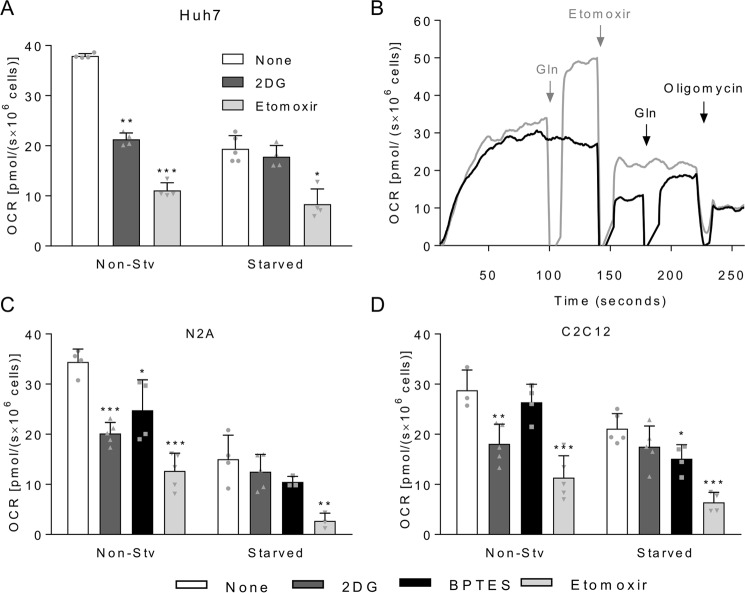Figure 2.
Oxidation of endogenous substrates by non-starved or starved cells. A, coupled OCR for non-starved (Non-Stv) or 1-h-starved Huh7 cells. Cells were loaded in oxygraph chambers, and after basal respiration was recorded, cells were not treated (white bars) or treated with 5 mm 2DG (dark gray bars), 10 μm BPTES (black bars), or 200 μm etomoxir (light gray bars). After stabilization of the signal, OCR was recorded, and cells were treated with oligomycin for measurement of uncoupled OCR, which was used to calculate the coupled OCR. B, overlay of two representative respirometry experiments with starved Huh7 cells in DMEM-A. In the experiment shown with the black line, after basal respiration was recorded, etomoxir was added to the cells followed by the reintroduction of 2.5 mm glutamine and subsequent oligomycin addition. In the experiment shown with the gray line, after basal respiration was recorded, 2.5 mm glutamine was added to the cells followed by sequential addition of 200 μm etomoxir and oligomycin. C, same experiment as described in A except that the cells were N2A cells. D, same experiment as described in A except that the cells were C2C12 cells. For each graph, individual data points are represented with symbols. Error bars represent mean ± S.D. of three to five independent experiments, and asterisks indicate significant differences between non-treated coupled OCR and coupled OCR upon addition of the inhibitors: *, p < 0.05; **, p < 0.01; ***, p < 0.001.

